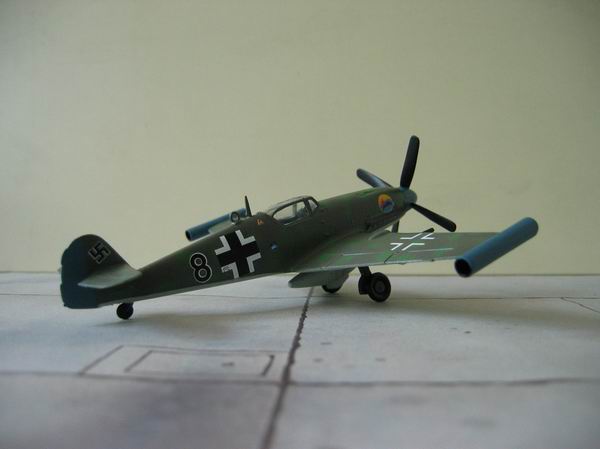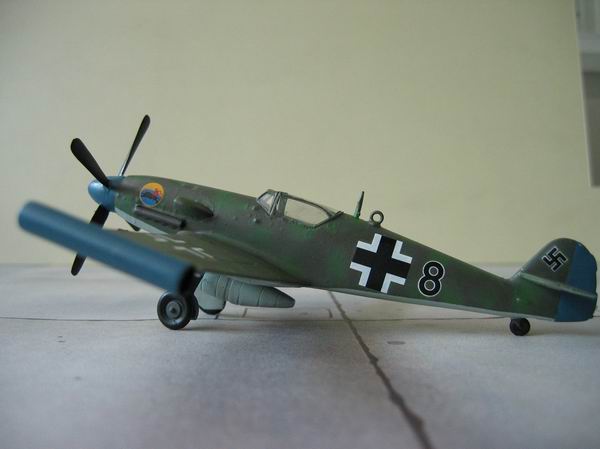


Development of the Me-109 M-0In a last desparate attempt to keep the Me-109 in production, the Messerschmitt company designed a last heavy fighter variant of the type early in 1945. At this time the K-4 was just entering into the operational units. For the M version a number of changes were envisaged:
The following versions were planned: M-2
: Heavy fighter with 2 x MG 131, 3 x MK 108 and 24 R4M
rockets In March 1945 two Me-109 M-0 aircraft were manufactured to test various features of the M series. The M-01 was fitted with a DB605S engine. Because the four bladed propeller was not yet ready, it was first fitted with a standard three bladed unit. Performance was disappointing with this configuration.
The M-02 had
the Walter ramjets at the wingtips and was fitted with a four bladed
propeller and two R4M racks. The M-03 which had the new fuselage was under construction when the war ended as was the prototype for the planned M-6.
The M-02 was
delivered to I./JG 302 where it was tested under operational conditions
as black 8. It is dubious if the Me-109M would have been ordered into production, had the war lasted longer. The design of the Me-109 was at the end of its possibilities with the K version and the new jet fighters were rapidly replacing piston engined types in the front lines.
|

Last updated: 21/12/2022